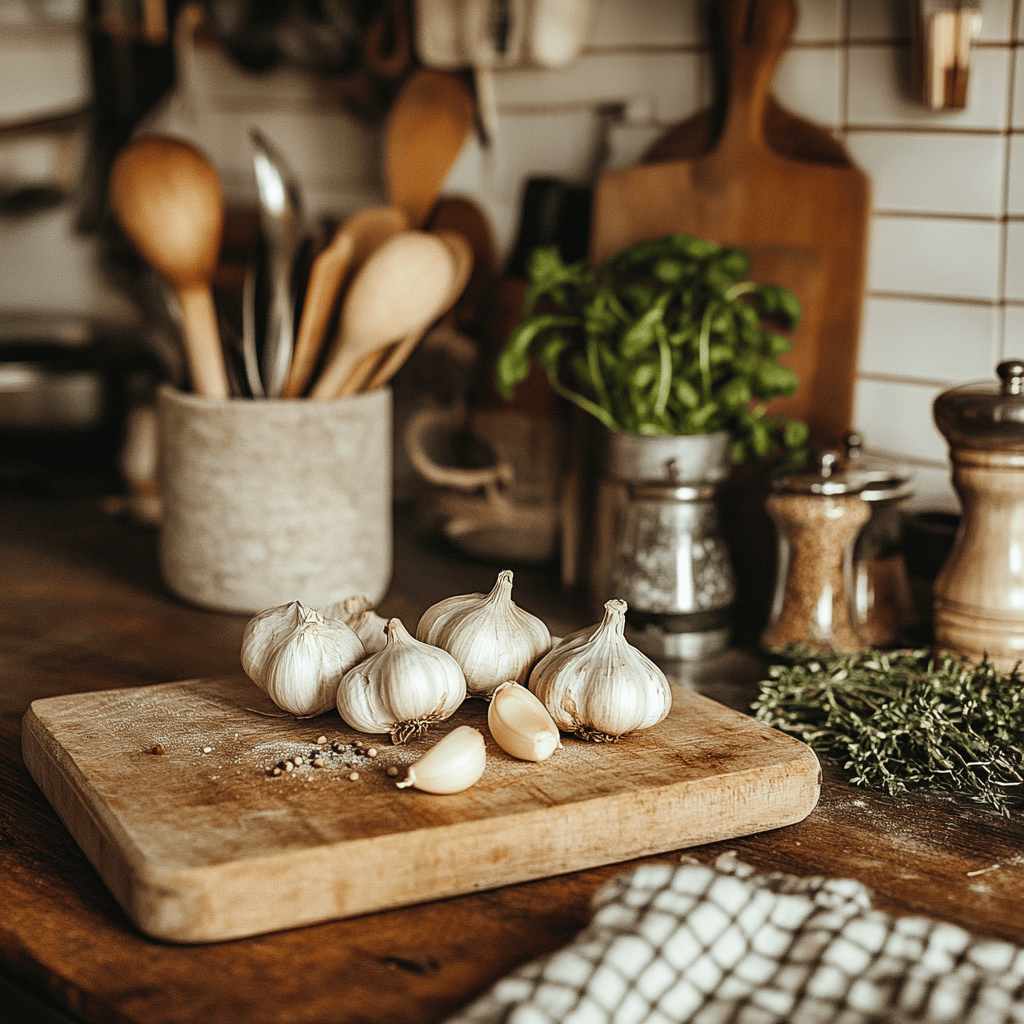The Best Fluffy Pancakes recipe you will fall in love with. Full of tips and tricks to help you make the best pancakes.

Finally Answered: This Is the Proper Way to Store Garlic
If you’ve ever found yourself wondering how to keep garlic fresh and flavorful for as long as possible, you’re not alone! In this comprehensive guide, we’ll explore the best methods for storing garlic, the common mistakes to avoid, and some clever tips and tricks that will ensure you maximize both the shelf life and flavor of this versatile ingredient. Garlic is a culinary staple that not only elevates dishes with its intense flavor but also boasts several health benefits. Let’s dive into the world of garlic storage to keep your dishes bursting with flavor!
Understanding Garlic
Types of Garlic
Before we delve into storage methods, it’s essential to understand the different types of garlic you may encounter at your local grocery store or farmer’s market:
- Hardneck Garlic: Known for its robust flavor, hardneck garlic has a hard stem and typically produces fewer but larger cloves. It tends to have a shorter shelf life than softneck varieties.
- Softneck Garlic: The most common type found in grocery stores, softneck garlic is usually milder in flavor and has a longer shelf life. It features flexible stems that allow for easy braiding.
- Elephant Garlic: Despite its name, elephant garlic is closer to leeks than true garlic. It has a mild flavor and is typically used in recipes requiring less pungency.
Why Proper Storage Matters
Proper storage of garlic not only retains its flavor and aroma but also prevents sprouting and spoilage. Storing garlic incorrectly can lead to a decline in quality, which affects the taste of your meals. Additionally, spoiled garlic can introduce harmful bacteria into your dishes. Knowing how to store garlic properly can save you both money and food waste.
Best Practices for Storing Garlic
Whole Garlic Bulbs
The best way to store garlic in its whole form involves creating an environment that is cool, dark, and dry. Here’s how to do it:
- Check for Damage: Before storing, inspect the garlic bulbs for any damage or signs of spoilage, such as mold or soft spots.
- Choose the Right Location: Place the garlic bulbs in a well-ventilated area, like a pantry or cupboard, away from direct sunlight. Ideal temperatures range between 60°F to 65°F (15°C to 18°C).
- Use a Breathable Container: Opt for a bag made of mesh, cloth, or a basket to allow for air circulation. Avoid plastic bags, which can trap moisture and cause spoilage.
Unpeeled Garlic Cloves
If you’ve broken a bulb and have unpeeled cloves left, store them similarly to whole bulbs:
- Cool and Dark: Store unpeeled cloves in a mesh or paper bag in a pantry or cupboard.
- Keep Them Dry: Ensure there’s low humidity in the storage area to prevent sprouting or mold growth.
Peeled Garlic Cloves
Peeled garlic can be stored differently than whole cloves due to its increased vulnerability to spoilage. Here are the best storage methods:
- Refrigeration: Store peeled cloves in a sealed container in the fridge. Use within 1-2 weeks for optimal freshness.
- Freezing: For long-term storage, peeled garlic cloves can be frozen. Place them in a single layer on a baking sheet, freeze until solid, and then transfer to an airtight container or freezer bag.
Chopped or Minced Garlic
Chopped or minced garlic requires careful storage to maintain its flavor:
- Refrigerate: Store chopped garlic in an airtight container in the fridge, and use within a week. For best flavor, make fresh quantities as needed.
- Freezing: You can also freeze chopped garlic. Spread it on a baking sheet, freeze, and transfer to a freezer bag for longer storage.
Garlic Oil
Garlic-infused oil adds depth to many dishes, but it requires safe storage practices:
- Chill Immediately: If you make garlic oil, pour it into a clean, dry container and refrigerate it right away. Consume within a week to avoid spoilage.
- Consider Acidifying: For safety, consider adding some acidity (like lemon juice or vinegar) to your garlic oil to extend its shelf life.
Common Mistakes to Avoid
Don’t Store Garlic in Plastic
Plastic bags trap moisture, promoting rot and sprouting. Always use breathable materials.
Avoid Warm and Humid Environments
Garlic thrives in dry, cool spaces. Storing it in the fridge (whole bulbs) or near the oven leads to spoilage.
Don’t Overcrowd Storage Areas
Keep garlic bulbs and cloves spaced apart to allow air circulation. Overcrowding can lead to mold and rot.
Don’t Purchase Pre-Peeled Cloves
While convenient, pre-peeled cloves often lose flavor and quality quickly. Fresh bulbs are the best choice!
Tips for Longer Storage
Check Your Garlic Regularly
Keep an eye on your garlic to spot any signs of spoilage, such as soft spots or sprouting. Remove any damaged bulbs promptly.
Consider Growing Your Own Garlic
If you love garlic, consider planting your own! Growing garlic is relatively easy and rewarding.
Experiment with Storage Techniques
Try different methods to see which one works best for you. Some people prefer freezing, while others enjoy the taste of fresh garlic. Find what suits your cooking style!
Conclusion
Storing garlic properly is essential to keep its flavor intact and to prevent waste. By following the tips and methods outlined in this guide, you can enjoy fresh garlic for weeks or even months. With your garlic safely stored, let the culinary creations begin! Whether you’re whipping up a batch of savory garlic herb bread or cooking up some crispy garlic parsley zucchini bites, knowing how to store garlic correctly will enhance your dishes dramatically.
If you liked this guide, check out our post on cheesy breakfast muffins to put your well-stored garlic to good use in breakfast recipes!





